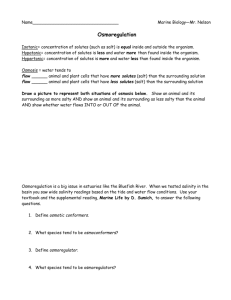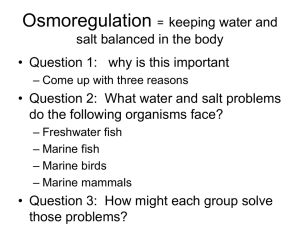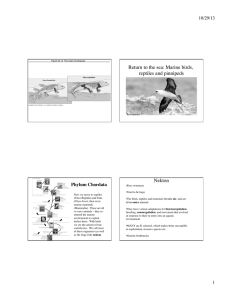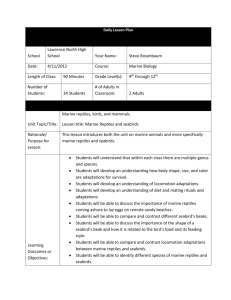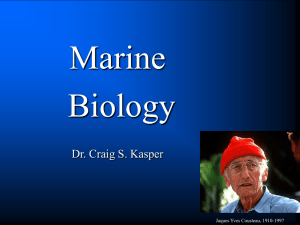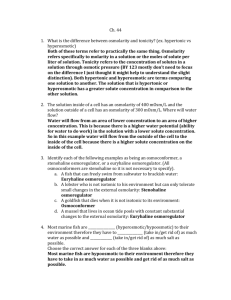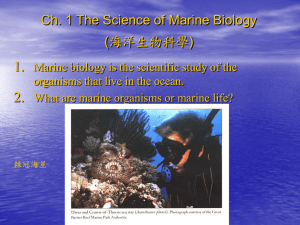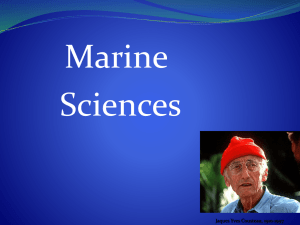Osmoregulation = keeping water and salt balanced in the body
advertisement
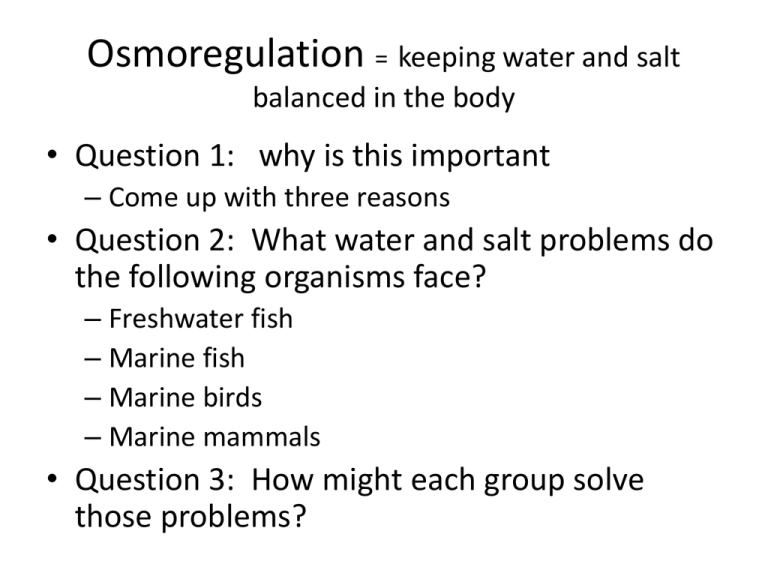
Osmoregulation = keeping water and salt balanced in the body • Question 1: why is this important – Come up with three reasons • Question 2: What water and salt problems do the following organisms face? – Freshwater fish – Marine fish – Marine birds – Marine mammals • Question 3: How might each group solve those problems? Definitions • • • • • • • • • Solute Solvent Osmosis Osmotic Pressure Osmolarity Hyperosmotic Hypoosmotic Osmoconformer Osmoregulator Solutes are dissolved particles in solution (any type) Water always moves from an area of low osmotic pressure to an area of high osmotic pressure osmotic pressure: Osmosis: Freshwater teleosts: Osmoregulators Hyperosmotic to environment Problems? Solutions? Active transport of salts via skin: 3 Na+ ClCl- Cl- 2 K+ ATP • Active transport of Na+ into animal • Cl- follows passively (electric gradient) Marine Strategies Cl- Na+ Cartilaginous fish Marine teleosts: Osmoregulators (hyposmotic to environment) Problems? Solutions? Marine reptiles and birds… How do they get rid of huge salt load? seawater Salt glands! Nasal fluid urine Salt glands Na+ mOsm seawater 470 sea snake 620 sea turtle 690 Marine Iguana 1000-1400 gull 600-900 cormorant 500-600 petrel 900-1100 • salt is excreted from the gland to outside the body • more concentrated than sea water! • mechanism is same in marine reptiles -but salt gland is in different places How do mammals make concentrated urine? Each nephron has a loop of Henle: nephron loop of Henle mammalian nephron: Loop of Henle mOsm Cortex Na+ Na+ Na+ Na+ Na+ Na+ Outer Medulla Inner Medulla Marine Mammals Several Adaptations: 1. Long loop of henle in the kidney --concentrated urine --less water lost with waste 2. Diet --carnivores, eating mostly vertebrates --vertebrates have lower osmolarity 3. Absence of sweat glands Nitrogenous Wastes affect Water Balance Proteins Nucleic acids Nitrogenous waste products AMMONIA UREA URIC ACID Excretion Tortoises and Turtles: % of urinary nitrogen Species Habitat Red-eared slider Freshwater Forest hinge-back tortoise Moist Terrestrial Mediterranean spurthighed tortoise Dry terrestrial Texas tortoise Desert Ammonia Urea Uric Acid • ammonia Teleost fish Amphibians reptiles • urea chondrichthyes Teleost fish Amphibians • uric acid Amphibians Birds and reptiles reptiles mammals Terrestrial summary • Water in: – Food and drink – Metabolic water • Water out: – excretion – Evaporative water loss • Adaptations in the desert? – Extended loop of henle – Reduced evaporative water loss • (gain in camel nose) – High dehydration tolerance

